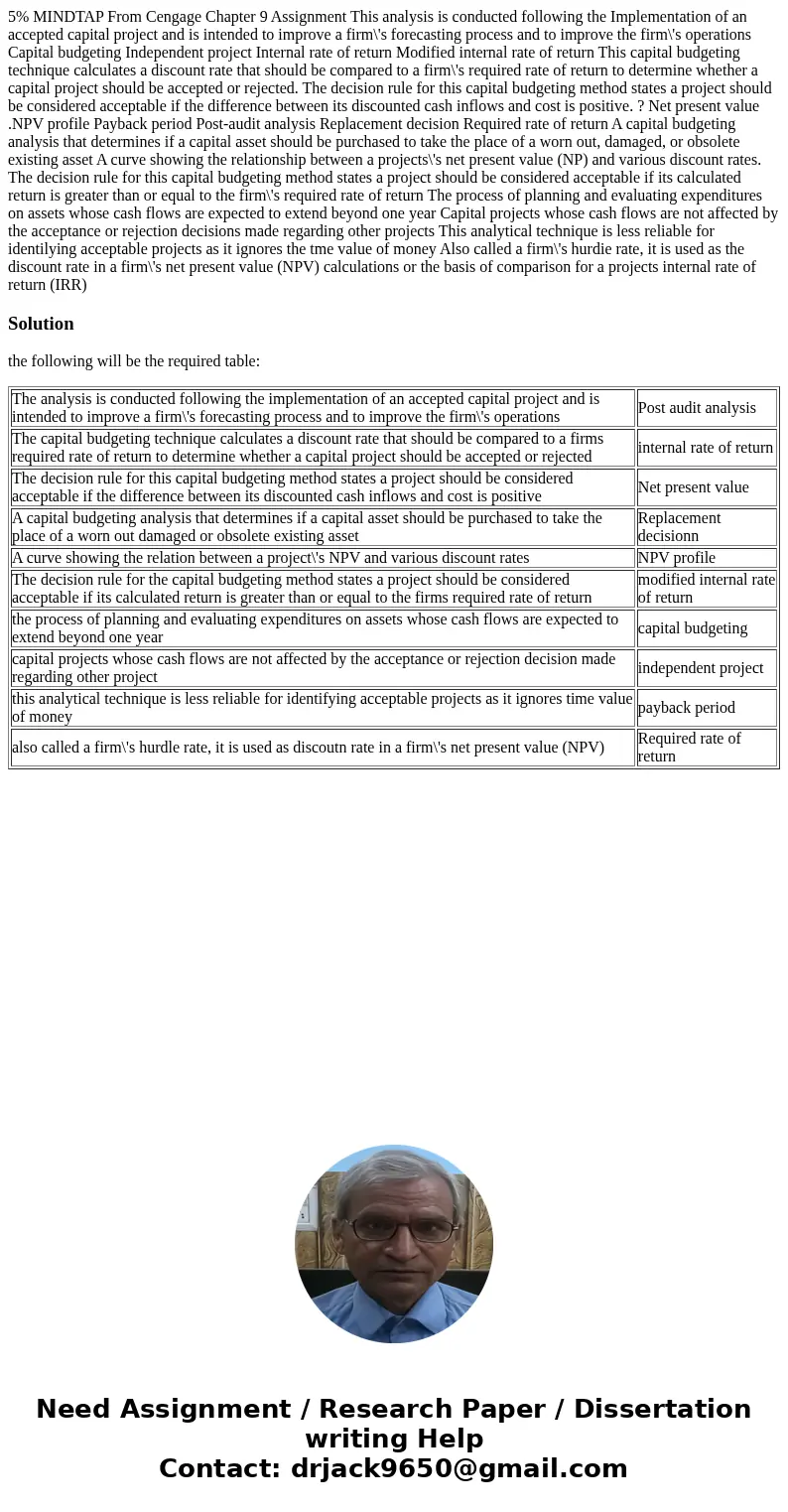5 MINDTAP From Cengage Chapter 9 Assignment This analysis is
5% MINDTAP From Cengage Chapter 9 Assignment This analysis is conducted following the Implementation of an accepted capital project and is intended to improve a firm\'s forecasting process and to improve the firm\'s operations Capital budgeting Independent project Internal rate of return Modified internal rate of return This capital budgeting technique calculates a discount rate that should be compared to a firm\'s required rate of return to determine whether a capital project should be accepted or rejected. The decision rule for this capital budgeting method states a project should be considered acceptable if the difference between its discounted cash inflows and cost is positive. ? Net present value .NPV profile Payback period Post-audit analysis Replacement decision Required rate of return A capital budgeting analysis that determines if a capital asset should be purchased to take the place of a worn out, damaged, or obsolete existing asset A curve showing the relationship between a projects\'s net present value (NP) and various discount rates. The decision rule for this capital budgeting method states a project should be considered acceptable if its calculated return is greater than or equal to the firm\'s required rate of return The process of planning and evaluating expenditures on assets whose cash flows are expected to extend beyond one year Capital projects whose cash flows are not affected by the acceptance or rejection decisions made regarding other projects This analytical technique is less reliable for identilying acceptable projects as it ignores the tme value of money Also called a firm\'s hurdie rate, it is used as the discount rate in a firm\'s net present value (NPV) calculations or the basis of comparison for a projects internal rate of return (IRR)

Solution
the following will be the required table:
| The analysis is conducted following the implementation of an accepted capital project and is intended to improve a firm\'s forecasting process and to improve the firm\'s operations | Post audit analysis |
| The capital budgeting technique calculates a discount rate that should be compared to a firms required rate of return to determine whether a capital project should be accepted or rejected | internal rate of return |
| The decision rule for this capital budgeting method states a project should be considered acceptable if the difference between its discounted cash inflows and cost is positive | Net present value |
| A capital budgeting analysis that determines if a capital asset should be purchased to take the place of a worn out damaged or obsolete existing asset | Replacement decisionn |
| A curve showing the relation between a project\'s NPV and various discount rates | NPV profile |
| The decision rule for the capital budgeting method states a project should be considered acceptable if its calculated return is greater than or equal to the firms required rate of return | modified internal rate of return |
| the process of planning and evaluating expenditures on assets whose cash flows are expected to extend beyond one year | capital budgeting |
| capital projects whose cash flows are not affected by the acceptance or rejection decision made regarding other project | independent project |
| this analytical technique is less reliable for identifying acceptable projects as it ignores time value of money | payback period |
| also called a firm\'s hurdle rate, it is used as discoutn rate in a firm\'s net present value (NPV) | Required rate of return |

 Homework Sourse
Homework Sourse